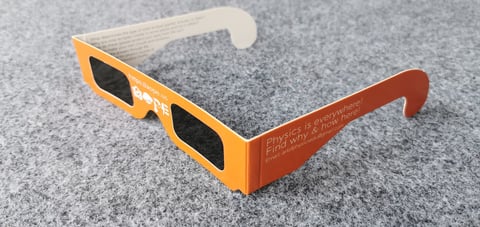No, your sunglasses are not enough!
Eclipse Excitement: Safely Unleash Your Inner Space Explorer
EDUCATIONAL RESOURCES
Lihann Liu
10/12/20232 min read


Solar Eclipse is coming to Bay Area!
On October 14, 2023, a partial solar eclipse will be visible from the San Francisco Bay Area. The eclipse will begin at 8:05 AM and reach its maximum at 9:19 AM. The eclipse will end at 10:42 AM (PST).


Why is it not safe to look at a solar eclipse, even if my eyes feel OK and the light is not that strong?
The Sun's rays are very intense, even during a solar eclipse. Looking directly at the Sun, even for a few seconds, even with regular sunglasses, can cause permanent eye damage. This damage is often not painful, so you may not even know that it has occurred until it is too late.
The Sun's rays can damage the retina, which is the light-sensitive tissue at the back of the eye. The retina is responsible for converting light into electrical signals that are sent to the brain, so damage to the retina can lead to vision loss.
Even if the light from the Sun does not seem that strong to you, it is still much brighter than what your eyes can safely handle. The Sun's rays can also contain harmful ultraviolet (UV) radiation, which can also damage the retina.
Solar Eclipse Formation
A solar eclipse occurs when the Sun, Moon, and Earth are aligned in a straight line. The Moon casts a shadow on Earth, which is what causes the eclipse. The type of eclipse that occurs depends on the relative sizes and positions of the Sun, Moon, and Earth.
There are three main types of solar eclipses:
Total solar eclipse: This occurs when the Moon completely blocks the Sun's disk. During totality, the Sun's corona, which is its outer atmosphere, can be seen.
Partial solar eclipse: This occurs when the Moon only partially blocks the Sun's disk.
Annular solar eclipse: This occurs when the Moon passes directly in front of the Sun but is too small to completely cover it, leaving a ring of sunlight visible around the Moon.
Regular sunglasses are not safe to wear to view a solar eclipse!
Regular sunglasses only block out a small amount of visible light, but they do not block out harmful ultraviolet (UV) radiation or infrared radiation. The Sun's rays contain a lot of both UV and infrared radiation, even during a solar eclipse.
The only safe way to view a solar eclipse is through special-purpose solar filters, such as eclipse glasses or handheld solar viewers. Eclipse glasses and handheld solar viewers block out harmful UV and infrared radiation and reduce the brightness of the Sun's light to a safe level.
When choosing eclipse glasses or handheld solar viewers, be sure to purchase them from a reputable source and make sure that they have the ISO 12312-2 international safety standard certification.
Alternately, make a DIY pinhole projector
Transform an ordinary cardboard box into a pinhole projector and turn your backyard into a celestial theater. It's like creating your very own movie premiere – except this one's in the sky! Making a pinhole projector is an exciting way to see the eclipse indirectly, without risking your eyes.
Gear up, and be ready to embark on your eclipse adventure!
Solar Eclipse Glasses sponsored by Art of Physics Education: https://aope.us
